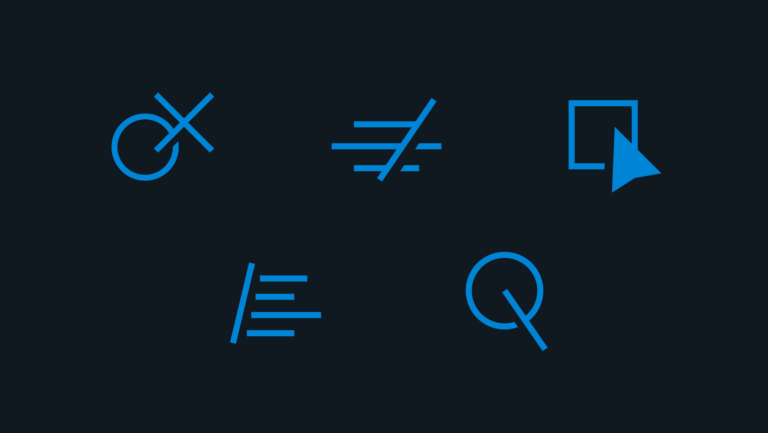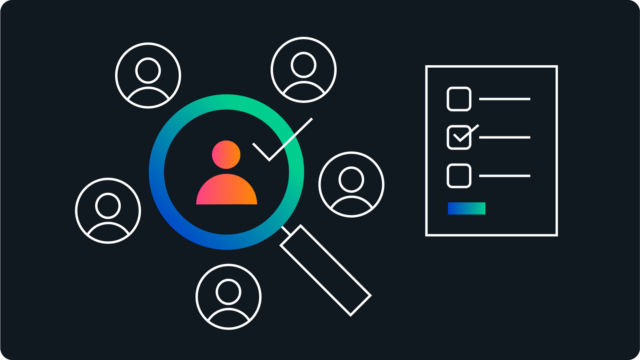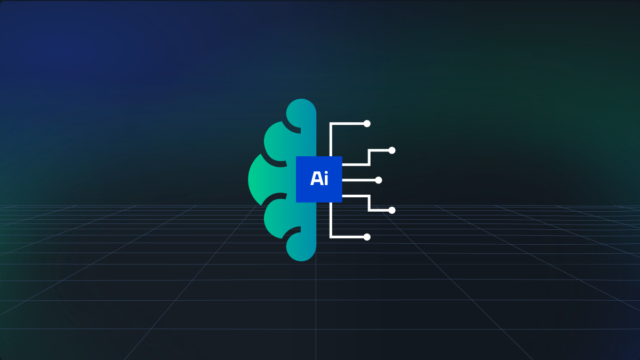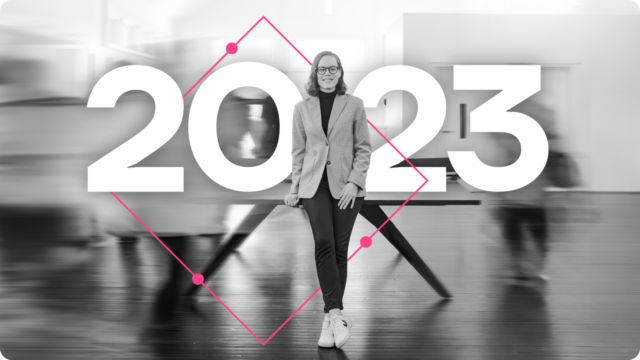What is web design? The ultimate guide

In this article, we’ll tell you everything you need to know about web design – from what it is, to why it’s important, to an outline of a process that will help your business create a world-class website that drives results.
First thing’s first: a web design definition
What is web design?
It’s more than you might think. Web design is more than just a website’s visuals, its code or the words that communicate a company’s message. It is a strategic process that, when properly executed, combines those elements into a website that serves as the face of your company and connects you to your target audience.
What does a web designer do?
Because our definition of web design takes in a number of roles and skills necessary to bring a website to life, asking ‘what does a web designer do?’ could have a number of accurate answers.
If we focus purely on the visual design of a website, a web designer will contribute to user experience (UX) design, user interface (UI) design, or both. We have a thorough explanation of the difference between UX and UI design on our blog.
To summarize, from that article:
- Great UI makes it easy for your users, while great UX makes it meaningful.
- UX always comes first, ensuring alignment of the experience with key business goals and taking a strategic approach to designing the overall impression users will have.
- UI is then a key way to make that UX happen. It’s a part of UX focused on the visual elements presented to the user and the way they interact with them. It’s guided by the strategic mandates established in the UX process.
In the remainder of this article we’ll be focusing on both UX and UI design, but also on the other key roles needed to produce a world class website that delivers results.
What is the process of web design?
After over a decade of helping startups, enterprises, B2B, and B2C companies hit their goals, we’ve developed a web design process that drives revenue time and time again. We want to share that with you here.
At Tiller, the process of web design can typically be broken down into five stages. These stages layer form and function and together create an engaging, revenue-driving machine.
In this guide, we’ll run you through our proven web design process, and show you how every detail matters. This is your ultimate guide to website design on the basis of our team’s principled approach to web design best practices.

1. Strategy & Planning
Whether you have a clearly defined marketing strategy or not, creating or redesigning a website requires a different strategic lens. The initial planning phase should include a thorough examination of your goals and all of the elements required to get you there.
When planning is done well, you are more effective in subsequent stages of the process. You know how and when to incorporate each element in a way that achieves your end goal.
Conversely, if you undervalue strategy and planning, you risk creating an ineffective website with untapped, unrealized potential, and forfeited ROI.
There are three major steps within the planning phase that will ensure you are set up for success throughout the remainder of the design process. Let’s take a look.
Web Plan
A web plan is a written outline of all that your site will include and accomplish. Depending on the type of site, there are different aspects to consider, but here are a few foundational ones:
- Key objectives – It’s critical to define these at the outset as web design projects require many decisions and it’s important to always tie them back to your business goals.
- Target audience – It’s much easier to give someone a gift when you know who they are and what they need. Audience personas are helpful tools that humanize your ideal customer and determine what they care about and what keeps them up at night.
- Competitors – You can’t win the game until you understand your opponent. We always recommend that you get a clear understanding of the competitive landscape, including what your competitors are offering, how they are positioning themselves in the market, and how you can differentiate your business or brand with your target audience.
- Sitemap – This is a list of the pages that will be included in your website. It outlines how the pages are going to work together and deliver a smooth user experience.
- Information architecture – This adds substance to the sitemap by assigning content to each page. This is an important bridge to wireframing, which we’ll discuss shortly.
User Experience (UX)
UX is the sum total of the customer’s experiences on your website. It includes their reactions, perceptions, and feelings as they interact with each page. The web plan begins the UX process by identifying your audience and their needs and preferences. Then you can design a website that reaches and engages them. While UX is considered an individual step in the process, it is actually integral to each stage, because each stage of web design is completed with the user in mind.
Wireframing/Prototyping
The content outlined in the information architecture is translated into wireframes. Wireframes are like blueprints, outlining how headlines, images and other content elements are laid out on each page. Once the pages are laid out as wireframes, a navigable prototype is created to allow you to click through pages and explore the journey the user will take from one page to another. This is referred to as the user flow.
Picture a user flow like a transit line map – many stops, many lines, criss crossing and leading to different destinations. Drawing the map gives clarity to what pages, buttons, links, etc. are necessary to ensure arrival at the right destination.
Navigation is considered here as well. In our world of instant gratification, if the customer doesn’t find exactly what they need, and fast, they will move on. Leaving the journey to chance or assuming they will eventually find the right path is like putting your child on the London Underground without a map and hoping they get off at the right stop. Don’t do that.

2. Copywriting
Good copy is essential to web design because it delivers your message to the user. Professional web copy does this with a clear, concise, and consistent brand voice that expresses the personality and tone of the brand.
There are a few common strategic mistakes when it comes to copy and web design. The first is to simply cut copy out of the budget, believing that great graphic design will make up for mediocre messaging/writing. But remember, no matter how visually appealing a site may be, poorly written copy can lead to confusion or misinterpretation of your offering and brand, which in turn leads to missed opportunities.
Another frequent error is to assume that all good writers can write good web copy. Copywriting is actually equal parts art and science, so expert copywriters are masters at balancing information, audience and brand voice. They also understand SEO strategy and add value by including specific keywords that will help drive traffic to your site.
Your message matters. Make sure you communicate it effectively.

3. User Interface (UI) Design
In plain terms, UI is what the user sees and what they click on. Imagery, layout, copy, colour, and typography all work together to create an experience the user can interact with.
Balance is incredibly important in web design. Content-heavy pages may overwhelm the user and dilute your core messages. A strategic use of white space and carefully selected visual elements will draw them in and allow them to digest the information. It is the marriage of copy and design that clarifies and amplifies your message.
Colour is used very strategically in web design to create and reinforce a consistent brand. Think of Coca-Cola’s iconic red and white colours. Or the red and yellow of McDonalds. People come to trust this familiarity.
Colours outside of your brand’s primary colour scheme can sometimes also be used to evoke emotions and various motivations in users. Red is harsh, abrupt, and gives a sense of urgency, while green of course means, “Go” (explaining why it is the most commonly used colour for CTAs). Intentional use of colour is essential to driving high conversion rates.
When it comes to fonts, consider the overall clarity of the page. Too few makes it difficult to focus or scan the page, but too many can feel chaotic and distracting. And when selecting fonts, choose standard over decorative to avoid coming across as unprofessional.

4. Development
Development is the process of translating static content into a navigable, live experience using code (HTML/CSS, PHP, Javascript, to name a few). For example, development takes a simple, static button, and creates a hover effect to further engage the user.
An effective website must come to life, do what it says it will do, and do it well. Slow page loading and broken functionality will turn people away before you know it, but an intuitive and well-functioning website makes for an exceptional user experience.
Good development ensures your website is always working on your behalf. It submits data into the Customer Relationship Management (CRM) so you never miss a lead, and when your prospective customer fills out a form, they get an automatic email letting them know that someone will follow up.
An expertly developed site is always scalable. You need your website to grow and change when your business does, so integrating a content management system (e.g. WordPress), lets you edit with ease whenever you need.

5. Quality Assurance (QA) Testing
QA includes rigorous development testing and thorough design/copy audits to prove that form and function are working as intended. It also ensures that your site is at optimal performance on all devices and browsers.
Prioritize the QA stage, because getting it right is key if you want to hit your goals.
Benefits of web design
Great web design contributes to your marketing success, of course. Your company website is the home-base for your brand in the digital realm and even if you have a physical storefront, it is usually the first time new customers and prospects will interact with your business.
Your website then becomes the central vehicle you use to execute your marketing efforts. Digital (and often physical) marketing campaigns drive potential customers to your website. It’s where they’ll learn about what you offer, who leads your company and why they need to choose you over any other provider.
Why web design is important
Because of all the above, your website is a critical – perhaps the critical – input into your overall business success. You can directly tie the efficacy of your website to core business results like client acquisition and revenue growth.
At its core, that is the truest benefit of web design.
It helps your business grow and succeed.
In conclusion
We hope that this guide has given you a deeper understanding of what web design is and how each step of the process contributes to your site’s success. We also hope it’s given you a view into the factors that go into website design cost.
When considering what makes for effective web design, remember these key points:
- Do everything with the end in mind. The ultimate goal of web design is to help you reach your goals. Each stage should take you one step closer.
- Plan, plan, plan. Take your time crafting your information architecture and wireframes. Rushing the strategy and planning phase leaves your success up to chance.
- UX/UI are vital. Your user’s reactions, perceptions, and feelings determine the actions they take. It’s all about them and what they need.
- Form without function is dead. Quality development brings design to life and ensures your site will help meet your goals.
- Test to rest. QA testing makes sure everything is ready for launch and means you can rest easy knowing that the details are taken care of.
Trust the process, knowing that your efforts at each stage will result in web design that works on your behalf and drives revenue again and again.



